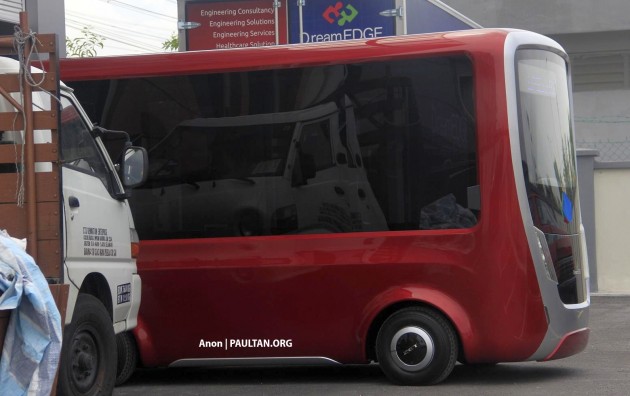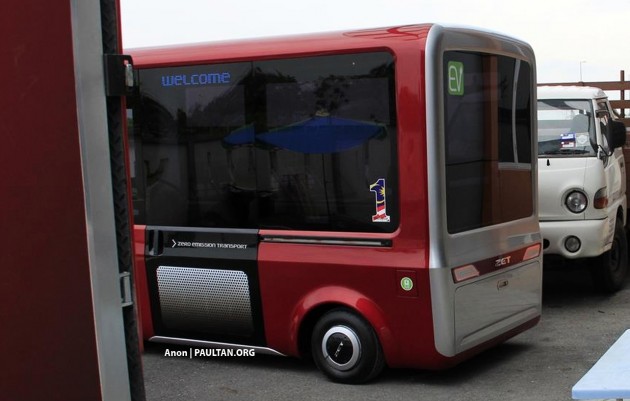Something along different lines – while we’re very much car-based in what we report, this one is definitely worth a bit of a shout. A reader who has chosen to remain anonymous has sent in these two shots, and it’s of a mid-sized EV shuttle.
What makes this one different is that it’s very much a local effort – the Zero-Emission Transport, as it’s badged, is the work of DreamEdge, a Malaysian engineering and solutions provider.
Last year, Bernama reported that the company was due to unveil three new self-developed innovations this year, and one of these was the Zero-Emission Transport (the others are reportedly a DECSY Dental CAD/CAM system solution and a Formula Four car).
In the automotive sector, DreamEdge is engaged in a strategic partnership with Nissan Japan, as well as with Tokyo R&D Japan, the latter in developing motorsport R&D capabilities for racing cars, according to the ETP annual report for 2012.
The Tier 2-rated company began operations in 2007 with just three engineers, the number which has since grown to over 100. Aside from the automotive sector, the company is involved in rolling stock (monorail and MRT) and shipbuilding/ship design, the last with Boustead Heavy Industries.
Back to the ZET shuttle, or minibus if you will – no idea how far the development has progressed, and whether the prototype is a fully-working sample. Looks cool though, the ZET – it’d be perfect for short-range point-to-point transportation in airports or between MRT stations to park-and-ride areas, no?
Looking to sell your car? Sell it with Carro.




AI-generated Summary ✨
Comments on the Malaysian-designed Zero-Emission Transport reflect a mix of pride and skepticism. Many are proud of the local innovation, highlighting the effort of Malaysian engineers and the collaboration with Japanese partners. Some praise the design and eco-friendly concept, seeing it as a sign of technological progress for Malaysia. However, critics raise concerns about the vehicle's size, safety, quality, and manufacturing details, noting the involvement of Thai engineers and the use of Thai components. Several comments also focus on the design aesthetics, practicality on Malaysian roads, and the project's transparency. Despite some doubts, there is general support for promoting local technological efforts, with encouragement for further development and implementation of such green transportation solutions.